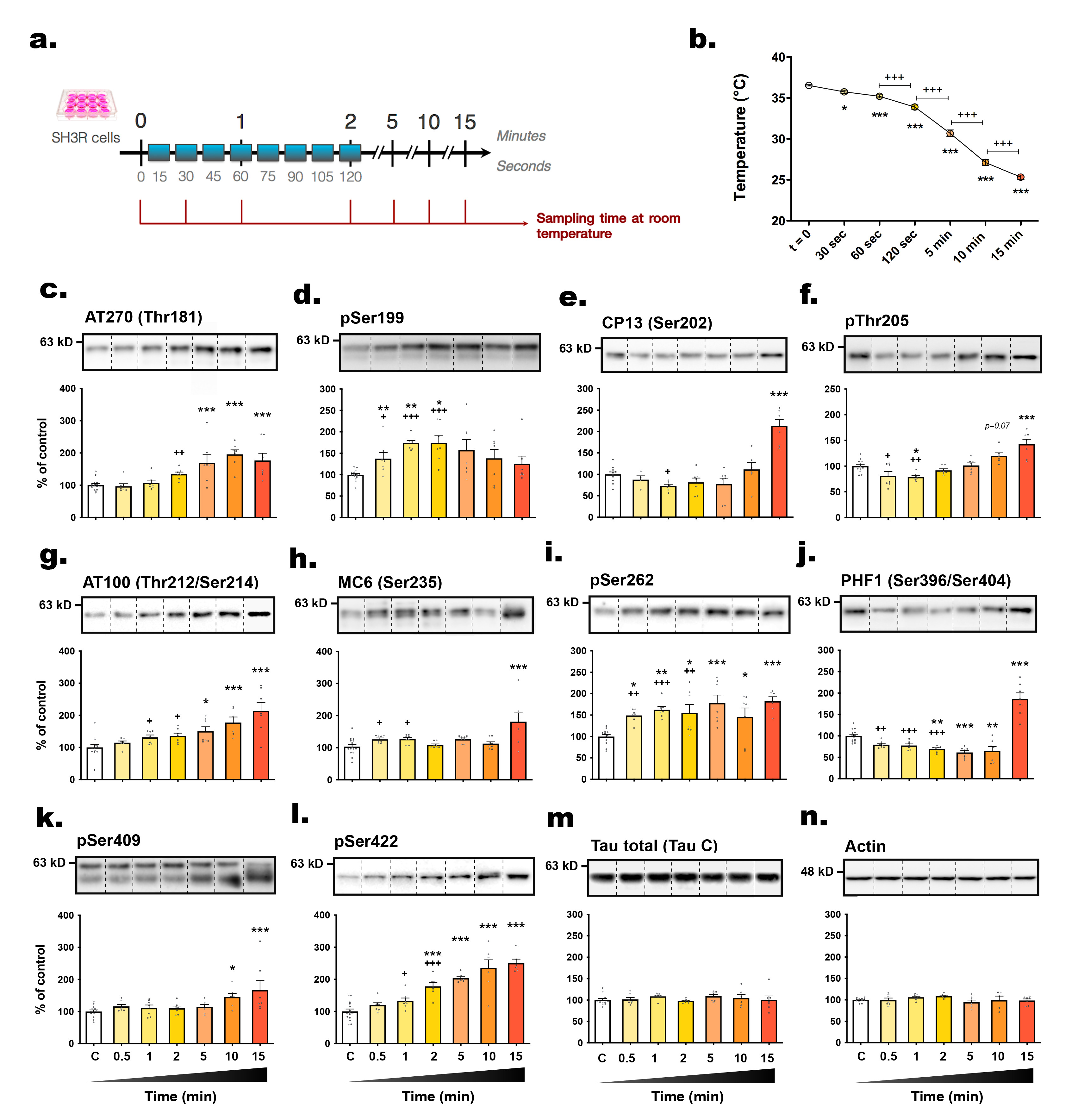
Fig. 1. The level of tau phosphorylation in SH3R cells is rapidly influenced by exposure to room temperature. (A) Experimental protocol. Cells in 6-wells plates were removed from incubators and were sampled immediately (t=0, control) or at 0.5; 1; 2; 5; 10; 15 min (time spent at RT). (B) Measurement of the temperature of cell medium (when removed from the incubator) against time. Repeated measures 1-way ANOVA followed by Tukey’s post-test was performed, F6,30=18.20 (p<0.05). *p<0.05, **p<0.01 and ***p<0.001 vs. control condition; +++p<0.001 vs. indicated group. n=6 per condition. The following antibodies were probed by immunoblot: (C) AT270 (pThr181), (D) pSer199, (E) CP13 (pSer202), (F) pThr205, (G) AT100 (pThr212/Ser214), (H) MC6 (pSer235), (I) pSer262, (J) PHF1 (pSer396/404), (K) pSer409, (L) pSer422, (M) total tau and (N) β-actin. For immunoblot quantification, each phospho-epitope level was normalized over total tau protein levels. For each condition, a representative band is presented above graphs. Data are presented as mean±SEM and expressed as percentage of control condition (t=0). n=6~10 per condition. 1-way ANOVAs followed by Dunnett’s post-test were performed: AT270: F6,50=9.96 (p<0.001); pS199: F6,50=4.54 (p<0.001); CP13: F6,42=20.89 (p<0.0001); pT205: F6,46=14.32 (p<0.0001); AT100: F6,47=8.87 (p<0.0001); MC6: F6,55=6.34 (p<0.0001); pS262: F6,47=5.92 (p<0.0001); PHF1: F6,49=36.35 (p<0.0001); pS409: F6,48=3.89 (p<0.01); pS422: F6,49=25.96 (p<0.0001); total tau: F6,46=0.67 (ns); actin: F6,44=1.29 (ns). *p<0.05, **p<0.01 and ***p<0.001 vs. control condition. A second 1-way ANOVA followed by Dunnett’s post-test was performed only on the first timings (from t=0 to t=120 sec) : AT270: F3,32=6.05 (p<0.01); pS199: F3,32=17.78 (p<0.0001); CP13: F3,26=3.19 (p<0.05); pT205: F3,29=4.74 (p<0.01); AT100: F3,30=4.21 (p<0.05); MC6: F3,35=4.07 (p<0.05); pS262: F3,30=10.84 (p<0.0001); PHF1: F3,31=13.85 (p<0.001); pS409: F3,26=0.97 (ns); pS422: F3,32=13.63 (p<0.0001). +p<0.05, ++p<0.01 and +++p<0.001 vs. control condition.
© Exp Neurobiol


